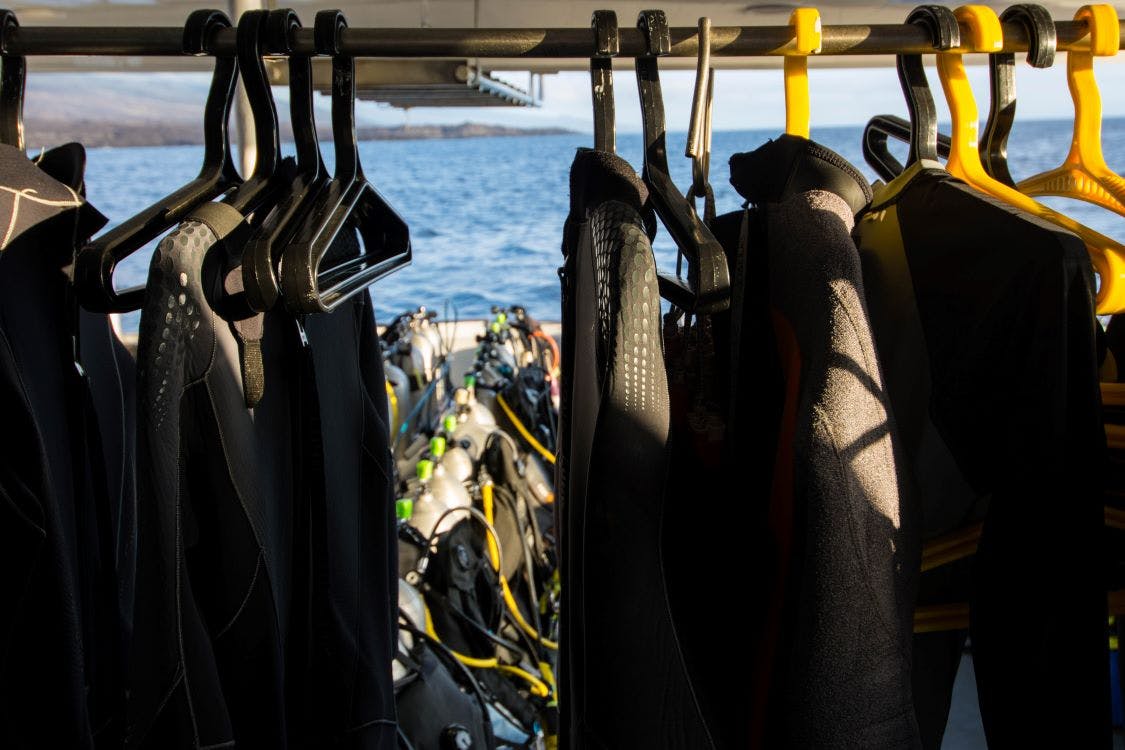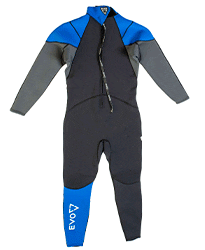Free Shipping on orders of $49+ | Signup for Direct Rewards
Free Shipping on orders of $49+ | Free Store Pickup | Signup for Direct Rewards
Free Shipping on orders of $49+ | Signup for Direct Rewards
Free Shipping on orders of $49+ | Free Store Pickup | Signup for Direct Rewards

Whether you already own a wetsuit or are considering getting one, if you are reading this, you want to know the best ways to maintain it. Like everything else, taking care of your wetsuit is essential if you wish to preserve its quality and performance. Here are 10 tips to help you extend the life of your wetsuit.
After using your wetsuit, rinse thoroughly with freshwater. Whether you are diving, surfing, or even just swimming, it is important to clean your wetsuit afterward to remove any salt, sand, and other debris that has clung onto the fabric. Doing this will improve the longevity of the neoprene material.
Ideally, you’ll want to rinse your wetsuit while it's still wet. You can either dunk it in a tub of freshwater or spray it with a hose, paying special attention to the zipper. If you need to head home before your wetsuit drys, gently place it in a dry bag to avoid creating a soggy mess in the car.

Even if you rinse your wetsuit after every use, you may notice an unpleasant odor. After multiple uses, your wetsuit is bound to get dirty and smelly. Avoid using harsh chemicals, bleach, or regular laundry detergents. Simply, fill a tub or large bin with freshwater, grab Slosh, Sink The Stink, or any other mild wetsuit detergent, and lather it for 5-10 minutes. After that, your wetsuit should look and smell clean! Never use a washer or dryer to clean your wetsuit because they can damage the neoprene material and seams.

Regardless of how you wash your wetsuit, you should hang it to air dry using a wetsuit hanger. Avoid using a standard hanger meant for t-shirts as the weight of the soaked wetsuit could strain the upper area, making it more vulnerable to tears and loosened seams. If a wetsuit hanger is not available, you can simply fold it in half and hang it by the waist.
While you may be tempted to, the best place to air dry your soggy wetsuit is NOT in direct sunlight. The harsh UV rays will degrade the neoprene and cause it to lose elasticity.
Instead, place your wetsuit in a shaded area with good ventilation. It can hang outside, just not under the scorching sun. Once the insides are dry, turn it right side out.
Before storing your wetsuit, make sure it is completely dry to prevent the growth of mold and mildew. Now that it’s not wet and 3 times its weight, you can either hang it by the shoulders (if you have the available space), roll it up, or fold it.
Everyone has their own way of folding clothes but wetsuits are different. When storing a wetsuit, the fewer creases the better. Here is our recommended way to fold a wetsuit.
How to Fold your Wetsuit:
Step 1: Make sure your wetsuit is dry and lay it on its front
Step 2: Fold at the bend of the knee
Step 3: Criss-cross the arms over the back
Step 4: Fold the legs into the mid-section
Step 5: Fold in half once more
Step 6: Gently Store

Has this ever happened to you? With either a jacket or backpack, you tug the zipper a bit too hard and it pops off. Given that your wetsuit zipper is your entry and exit point, it is important to be gentle with it. In Step 1, I mentioned paying attention to the zipper when rinsing; that's because debris can enter the interlockings and cause some unwanted friction. After rinsing, if you still feel some resistance, grab some zipper lubricant. That should have your zipper zippy and zipping like new. Imagine accidentally tearing the zipper off…while still wearing your wetsuit! Sure, it's not the end of the world but it's definitely an irritating situation that can easily be avoided. Moral of the story, be kind to your zipper.

Be cautious of sharp objects, rocks, or rough surfaces that can puncture or damage your wetsuit. There is no need to treat your wetsuit like glass since they are built to withstand the elements but try not to get snagged by rocks when diving. Simply, be mindful of potential dangers. When putting on or taking off your wetsuit, do it on a clean, soft surface instead of gravel or asphalt. Lastly, prevent any unintentional punctures by storing your wetsuit somewhere safe. Avoid storing it by your spearguns, polespears, or anywhere cats can reach; you don’t want them kneading on the neoprene. Being conscious of these potential hazards will help protect your wetsuit.

Accidents do happen, so if you create a tear in your wetsuit, repair it promptly. However minimal the rip is, prolonging the repair will only worsen it. If you come across an imperfection, just slap on some neoprene cement to make it whole again. Remember, a wetsuit doesn’t keep water from entering but rather holds water and warms it with your body heat. Having an opening allows cold water to circulate through, which defeats the function of the wetsuit.
If you have more than one, rotating between wetsuits gives the other a chance to air out and regain its shape. For those clear, sunny days, leave the full-body wetsuit at home and opt for a shorty or rashguard. We all have our favorite pieces of clothing, like that beloved t-shirt or pair of jeans, but we know that the
more we wear them, the quicker they wear out. The same rule applies to wetsuits. To avoid excessive wear on a single suit, make it a habit to switch between different ones when you have the opportunity.
Lastly, regularly inspecting your wetsuit for signs of wear and tear can help you catch it early and take action to prevent it from worsening. Especially in high-stress areas like seams and cuffs, examine the condition of your wetsuit and determine if it is time for a new one. Wetsuits were designed to be durable but not invincible. If yours is still in good condition, consider getting another wetsuit to avoid excessive wear by rotating use between them. Conducting regular inspections will not only protect your wetsuit but yourself as well from the chilly depths that await.
By following these maintenance tips, you can extend the lifespan of your wetsuit and ensure that it continues to provide effective thermal protection during your water adventures. Happy Diving!

What thickness of wetsuit do I need?
The thickness depends on water temperature and personal preference. Generally, 3mm is suitable for warmer waters (above 70°F), while 5mm to 7mm is recommended for cooler temperatures (below 70°F).
How do I choose the right size wetsuit?
Refer to the size chart and consider your height, weight, and body measurements. A snug fit is essential for insulation but should not restrict movement or cause discomfort.
Can I repair a torn wetsuit?
Yes, minor tears and punctures can be repaired using wetsuit repair patches or neoprene adhesive.
How long does a wetsuit last?
With proper care, a wetsuit can last several years. However, frequent use, exposure to harsh conditions, and improper storage can shorten its lifespan.
Can I wear a wetsuit for other water activities besides diving?
Yes, wetsuits are versatile and suitable for various water sports such as surfing, paddleboarding, kayaking, and snorkeling.
Are there wetsuits specifically designed for children?
Yes, we offer wetsuits designed for children with smaller sizes and kid-friendly features like bright colors and easy-zip closures.
How do I prevent chafing while wearing a wetsuit?
To prevent chafing, ensure a proper fit, especially in areas prone to rubbing like the neck, armpits, and knees. Consider a wearing rashguard under your wetsuit for added comfort.